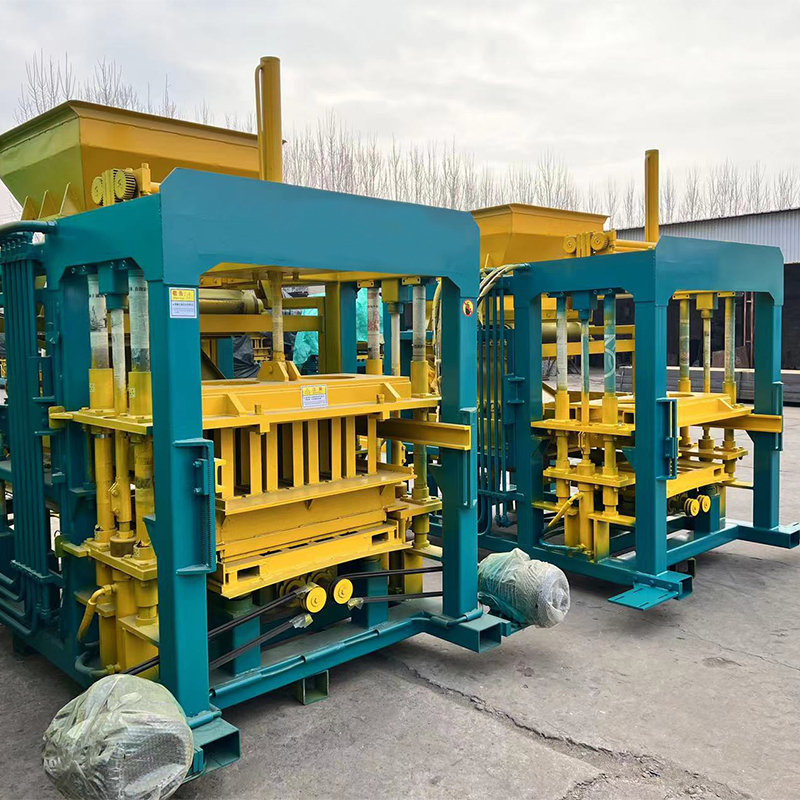
Image source :Aiweiblockmachine
Revolutionary Block Maker Machine
Introduction
Construction is an essential pillar of modern society, providing the infrastructure necessary for our daily lives. One of the most fundamental components of construction is building blocks – the basic units that form walls, pavements, and other structures. Traditionally, these blocks have been produced using labor-intensive methods that consume significant resources and emit high levels of carbon dioxide. However, a game-changing innovation has emerged in the construction industry – the Revolutionary Block Maker Machine. This article explores the concept, technology, benefits, and implications of this cutting-edge invention that promises to revolutionize the way we build.
- The Emergence of the Block Maker Machine
The Block Maker Machine represents a technological breakthrough in the construction industry. This revolutionary device is capable of producing high-quality building blocks using various materials like concrete, clay, or recycled materials. Its inception is driven by the urgent need to address the inefficiencies and environmental impact associated with traditional block production methods.
- The Technology behind the Block Maker Machine
The core technology of the Revolutionary Block Maker Machine is based on automated manufacturing processes. State-of-the-art robotics and artificial intelligence (AI) algorithms enable precise mixing, shaping, and curing of the building blocks. The machine is programmable, allowing for customization of block sizes, shapes, and compositions to cater to specific construction needs.
- Advantages of the Revolutionary Block Maker Machine
3.1. Sustainable Construction Practices
One of the most significant advantages of the Block Maker Machine is its sustainability. By using alternative materials such as recycled aggregates and industrial by-products, the machine reduces the demand for virgin resources, thus minimizing environmental impact and waste generation. Moreover, its automated processes consume less energy compared to traditional block production techniques, contributing to lower carbon emissions.
3.2. Cost Efficiency
The Block Maker Machine’s automation significantly reduces labor costs while increasing production efficiency. With minimal manual intervention, the machine can produce a high volume of blocks in a short period, accelerating construction timelines and reducing overall project costs.
3.3. Versatility and Customization
This revolutionary machine offers a wide range of possibilities for block customization. Construction companies can produce blocks of varying shapes, sizes, textures, and colors to meet the diverse aesthetic and functional requirements of different projects.
3.4. Enhanced Block Quality and Durability
The precise automation and consistent manufacturing process of the machine result in superior block quality, reducing defects and ensuring the durability of the constructed structures. The blocks exhibit improved resistance to environmental factors such as weathering, cracking, and decay.
- Impact on the Construction Industry
4.1. Job Market Transformation
While the Block Maker Machine offers significant benefits, its adoption may raise concerns about job displacement within the construction sector. The industry must strategize to upskill and retrain workers to operate and maintain these machines, ensuring a smooth transition to the automated construction landscape.
4.2. Reduced Carbon Footprint
By replacing resource-intensive and carbon-emitting processes, the Block Maker Machine plays a vital role in achieving sustainability goals within the construction industry. This shift towards greener construction practices aligns with global efforts to combat climate change.
4.3. Accelerated Project Delivery
The speed and efficiency of the Block Maker Machine allow for faster project completion. Consequently, construction companies can undertake more significant projects and contribute to infrastructure development and economic growth.
- Challenges and Future Prospects
5.1. Initial Investment
Despite its numerous advantages, the upfront cost of acquiring the Block Maker Machine and integrating it into existing construction workflows may pose a challenge for some companies. Governments and industry stakeholders should collaborate to provide incentives and funding opportunities to encourage wider adoption.
5.2. Regulatory Framework
As with any disruptive technology, the Block Maker Machine may require updated regulations and building codes to ensure safety, quality, and standardization across the construction sector.
Conclusion
The Revolutionary Block Maker Machine marks a turning point in the construction industry, addressing sustainability concerns, improving efficiency, and propelling the sector towards a greener, more technologically advanced future. With careful consideration of its challenges and prospects, the construction industry can embrace this innovation to build a better, more sustainable world. As this technology continues to evolve and gain prominence, its impact on the construction landscape will be felt for generations to come.
